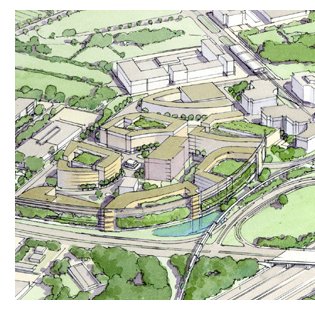

|
| weblog/wEssays archives | home | |
|
High Energy Cost Solution Is Close To Home--And Work (May 4, 2006)  Jacobs was a true iconoclast, a writer who came to her subject not as an academic expert or city planner but as someone who walked around New York with an unclouded observational eye. The book which resulted, The Death and Life of Great American Cities  In the simplest terms, Jacobs' key insight is that the livability and indeed, the viability
of any neighborhood or city is its diversity--of people, places to go, housing units,
modes of transport--in every aspect of daily life. She saw suburbs as places which have been
stripped bare of all but one type of housing (sprawling single-family dwellings) and one type
of transport (autos). As a result, suburbs are inherently less adapted to human life
than cities. There's very little you can do there except be at home. For everything else, you
have to drive.
In the simplest terms, Jacobs' key insight is that the livability and indeed, the viability
of any neighborhood or city is its diversity--of people, places to go, housing units,
modes of transport--in every aspect of daily life. She saw suburbs as places which have been
stripped bare of all but one type of housing (sprawling single-family dwellings) and one type
of transport (autos). As a result, suburbs are inherently less adapted to human life
than cities. There's very little you can do there except be at home. For everything else, you
have to drive.
And what does ceaseless driving do? It burns irreplaceable petroleum, eats up time in endless commuting and fouls the air. One would think the obvious solution is to rebuild our suburbs so that we needn't drive so much, but instead the focus is not on driving less but on creating higher efficiency vehicles. This is akin to decorating the arrow lodged in your chest so it looks less painful. The goal of New Urbanism is to re-establish diversity in cities and suburbs by building places which invite a diversity of residents, housing types, businesses and ways of getting around. This plan is of the Waterfront District in Hercules, Calif. across the Bay from San Francisco. It is a New Urbanist development worth examining, for it aggregates small owner-occupied businesses, retail, single family homes and some apartments all within walking (or biking) distance of each other. It occupies a bayfront site adjacent to a rail line and recreational open space. (I have written several articles about Hercules in the San Francisco Chronicle.)  The single most promising method of cutting commutes and driving time is to position
housing and work places close together. This common-sense concept is called Workforce Housing,
and perhaps the best way to achieve it is to build housing and mixed-use retail around and
within the massive parking lots surrounding business parks. For an example, take a look at
the project illustrated on the right,
Duany Plater-Zyberk's plan for an aging business park near Washington, D.C.
The single most promising method of cutting commutes and driving time is to position
housing and work places close together. This common-sense concept is called Workforce Housing,
and perhaps the best way to achieve it is to build housing and mixed-use retail around and
within the massive parking lots surrounding business parks. For an example, take a look at
the project illustrated on the right,
Duany Plater-Zyberk's plan for an aging business park near Washington, D.C.
For a nuanced and insightful look at the entire concept of modernity and how it has shaped our cities, I reecommend Marshall Berman's All That Is Solid Melts into Air : The Experience of Modernity For more on this subject and a wide array of other topics, please visit my weblog. copyright © 2006 Charles Hugh Smith. All rights reserved in all media. I would be honored if you linked this wEssay to your site, or printed a copy for your own use. |
||
| weblog/wEssays | home |